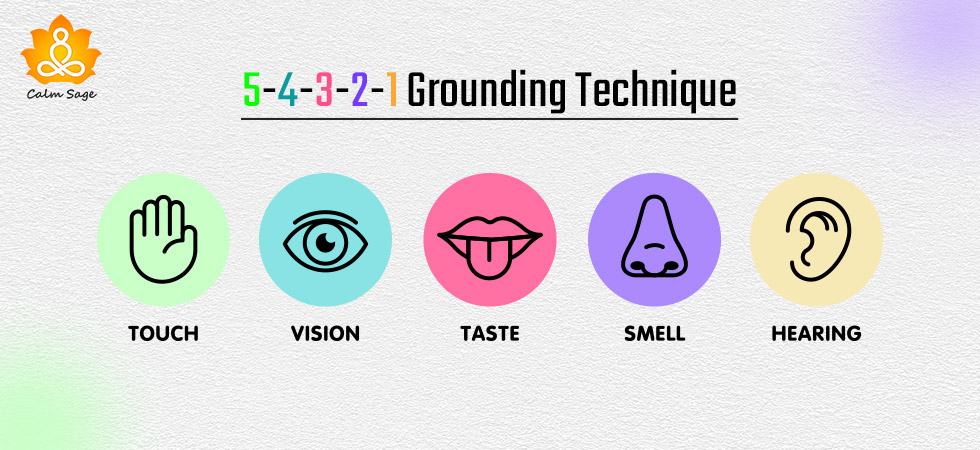
If you’ve ever struggled to write vivid sensory description in your story, here’s a quick tip: try using the 5-4-3-2-1 grounding method for managing anxiety.
Folks who struggle with anxiety use this technique to manage their body’s response to stressful stimuli; I have friends and colleagues who’ve told me it can help them prevent or mitigate a panic attack. It was one of these colleagues who shared their writing secret with me, too:
Because the 5-4-3-2-1 method helped her manage anxiety by connecting her with her surroundings, she began using it to connect characters with their surroundings, too.
If you’d like to learn more about how to use this technique to alleviate anxiety, you can check out this article here. Today’s post only addresses the techniques applicability to writing and isn’t meant to assist with mental health management.
Using the 5-4-3-2-1 technique for vivid description
When a new point of view character walks into a new setting, open up your worldbuilding notes (or take out a scrap of paper) and try the following exercise:
- Put yourself in your character’s body* and imagine the scene from their perspective. Shut your eyes if necessary.
- Commit yourself to noticing only what they would notice, giving priority to what they would find important or noteworthy and how they’d describe what they observe.
*For the sake of this exercise, let’s say our character is a detective in her forties who has recently lost her mother. She and her partner have just entered the home of a murder suspect’s mother for questioning.
Now note down the following:
- Five things the character can see. The floral wallpaper that reminds your character of her mother’s house. Framed pictures of family sit on every available surface. An antique rifle hangs over the mantlepiece. The room has three exits, one of which leads to a long, dark hall. There are two steaming coffee cups on an end table, as though someone else has recently been in the room.
- Four things the character can touch. The pile of the carpet is high and plushy beneath her boots. It’s hot inside the house and sweat forms beneath her collar. The mother’s hand is cool and dry when she reaches out to shake. The springs of the couch are long-busted, and she sinks into her seat when she sits.
- Three things the character can hear. Windchimes tinkle on the porch. Upstairs, a toilet flushes. The mother’s voice is soft and gentle.
- Two things the character can smell. The mother’s floral perfume is the same one her own mother wore. Something hearty is cooking in the oven.
- One thing the character can taste. The acrid tang of the cigarette she’d smoked before entering the house.
With these details in your worldbuilding document, you have not only a snapshot of the setting, but a list of the things your character first notices about that setting — a list which would be different if you made it from another character’s point of view. Setting and characterization: two birds with one stone.
Don’t use the list.
Now put the list away.
Or, rather, avoid the temptation to turn your list into several paragraphs of prose and jam it all into the top of the scene. That’s not what this list is for!
Instead, pick out two or three important, vivid details from that list and use those to ground the reader in the setting as the character enters. (In this case, perhaps we’ll pick the wallpaper, the room’s exits, and the mother’s perfume.) As the scene progresses and the character begins to interact with it and/or notice more details, use your list to trickle them onto the page as she encounters them.
By trickling, you can avoid information overload and ensure that only the most important, strongest details make it onto the page.
You don’t need to use all of the details listed above. Sometimes it won’t be possible to, or some senses won’t apply. Conversely, in scenes where noticing things is particularly important (ie: a detective visiting a suspect’s mother’s home), you might add to this list of details in order to both reveal and obfuscate important clues.
And remember: the purpose of the 5-4-3-2-1 method in fiction isn’t to measure how many details appear on page, but rather, to ensure that those details are concrete, sensory, powerful, and grounded in the POV character’s perspective.
Hope that helps you as your drafting or in your next round of edits!
Like the blog? Consider supporting me on Patreon!

